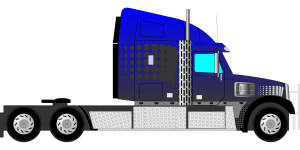The National Highway Traffic Safety Administration is pretty upset. Wouldn’t you be upset if thousands of trucks had lost control of their Automatic Emergency Braking systems? It’s truly a shame that this has affected over 250,000 Daimler vehicles. To be specific, their Freightliner Cascadias and the Western Star 5700 models. But alas, it’s something inevitable, given that the AEB system tends to be incorrect in recognizing the object, therefore, causing the commercial vehicle to stop way too quickly, as a hazard to more motorists. So far, there are plenty upon plenty of complaints being filed to the agency, which prompts the NHTSA to set up a preliminary evaluation.
Such an investigation prompts the NHTSA to look into what can be going wrong with the AEB technology.
It’s all in hopes that the 18 complaints will speak about errors found in the AEB system within specific model year trucks from the 2017 to 2022 models. All these Freightliner Cascadias and the Western Star 5700 trucks are under the gun and until Daimler can attest to what’s wrong with their system that it brakes unnecessarily as a threat to anybody else driving on the freeway, they’re to blame.
From all the reports drivers are making regarding the AEB, there’s no real roadway obstacle, given that it all happens as a false positive event, in all the tests where the AEB fails to distinguish. Such reports show whether the vehicle can apply the service brakes with no warning or involvement on the driver’s part. All applications are varied in immediacy, from momentary to partial application with less loss of speed to full application. All allowing the vehicle to stop totally in the travel lane.
The NHTSA states how their Vehicle Research and Test Center has utilized a Freightliner Cascadia AEB-equipped vehicle, which comes in hard with the braking service of which detects a steel trench plate.
Within this preliminary evaluation, the issue has been identified as to whether or not it would create an unnatural risk to safety.
Such an investigation arrives as the NHTSA and the FMCSA can issue proposed rulemaking. A push like that would adequately fit in a search for equipment to be required or even standardized for AEB systems upon the trucks in question.
This all goes back to the cardinal sin that every trucker, dispatcher, manufacturer, and policymaker should avoid. Never go on that long and lonely road without checking on all your parts.






